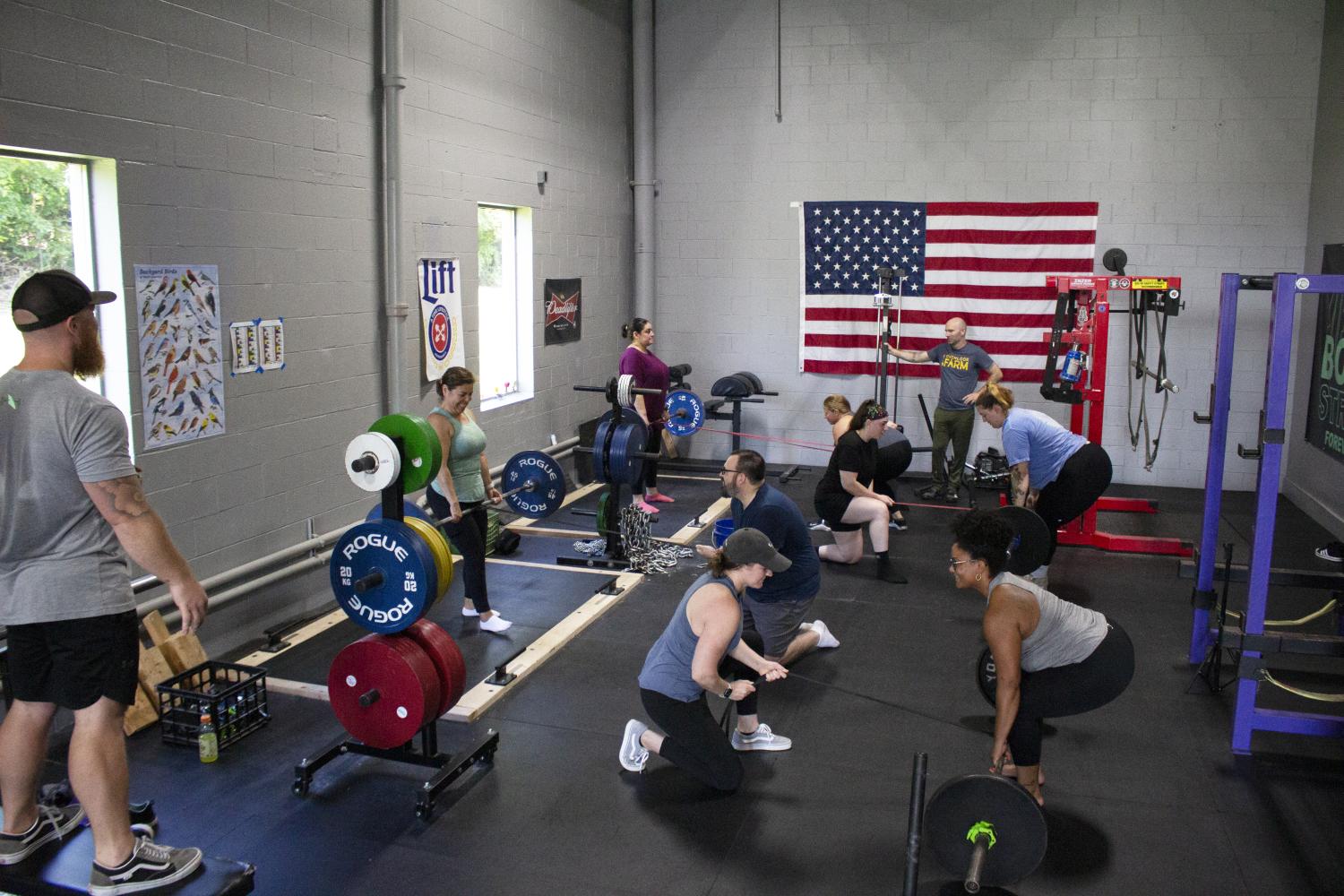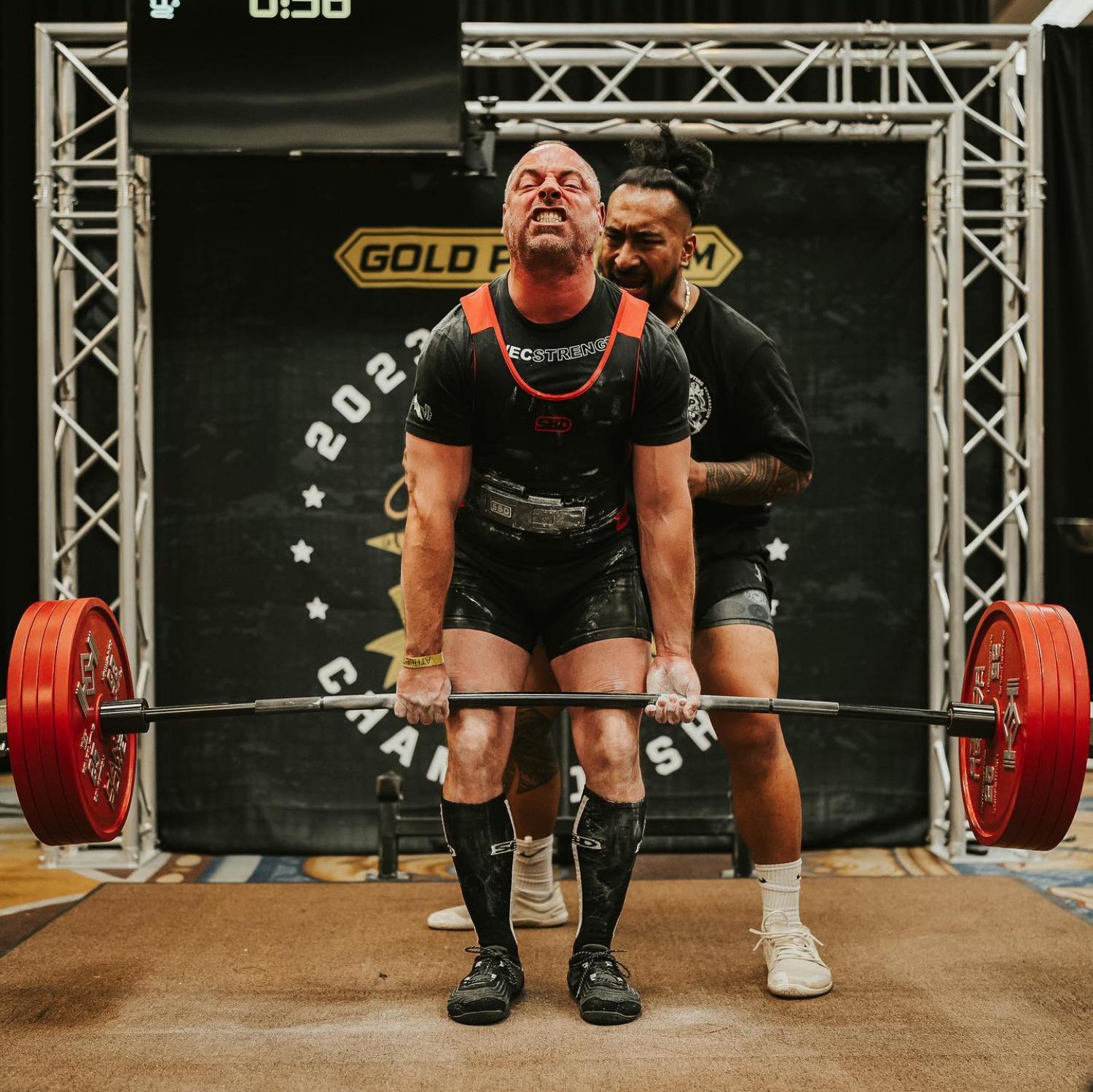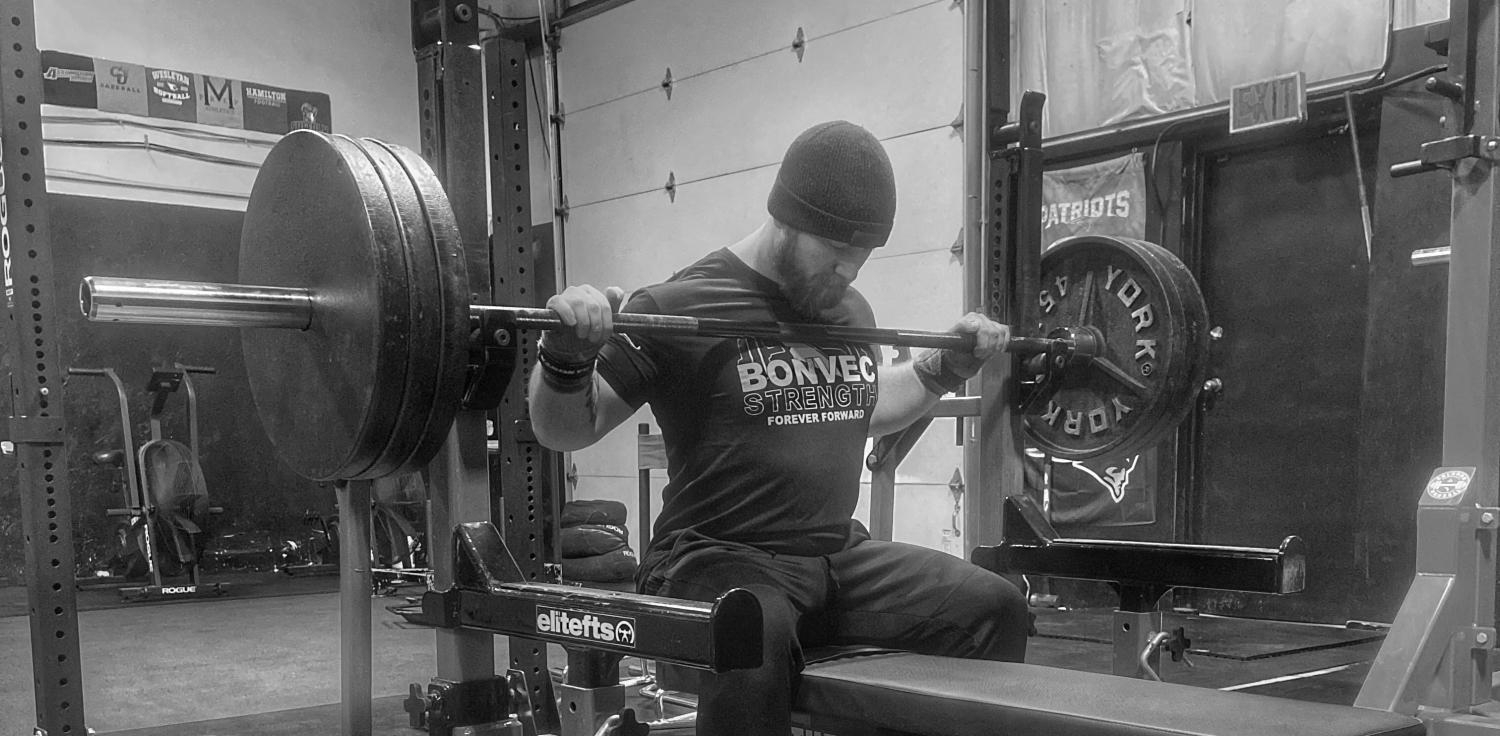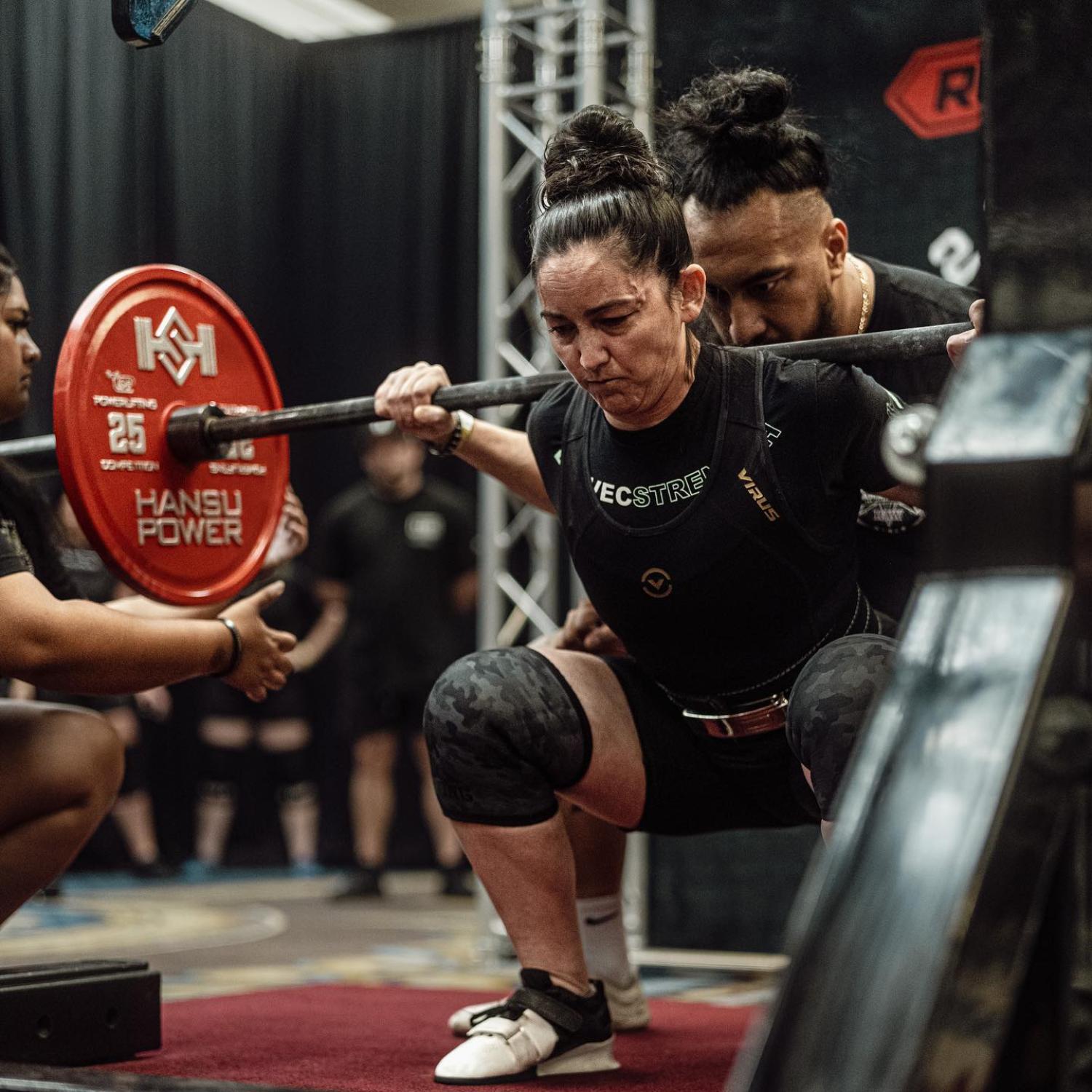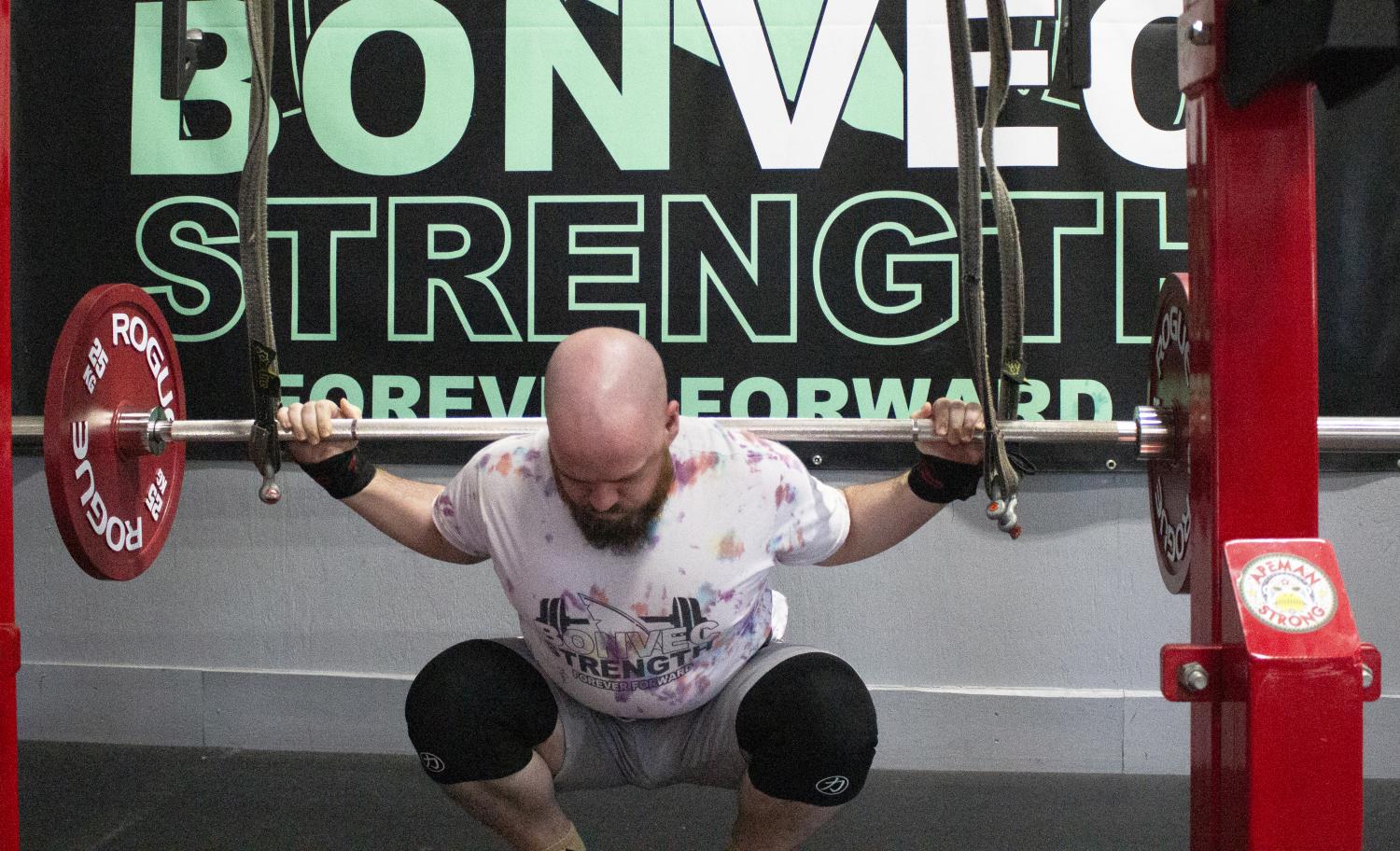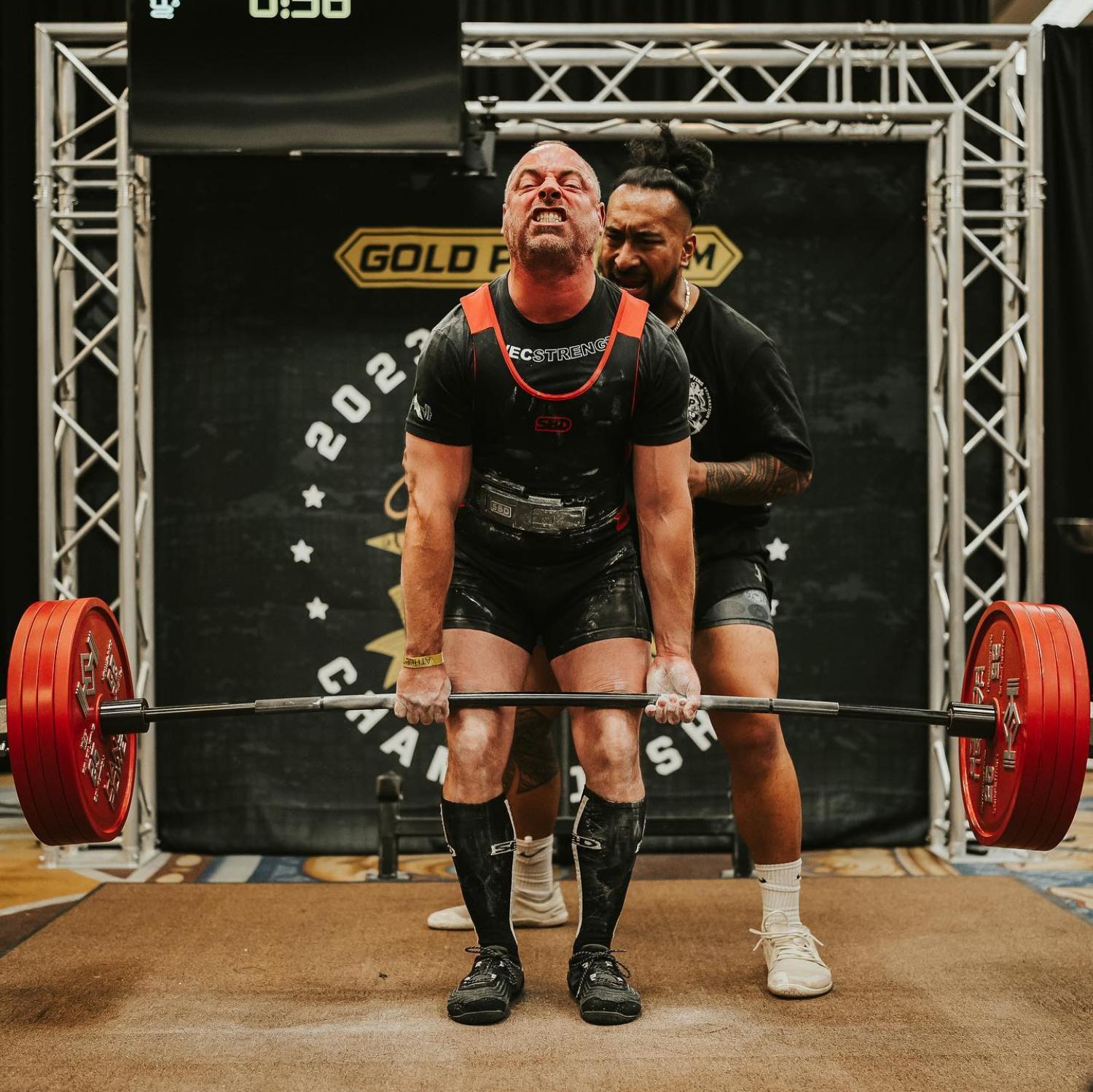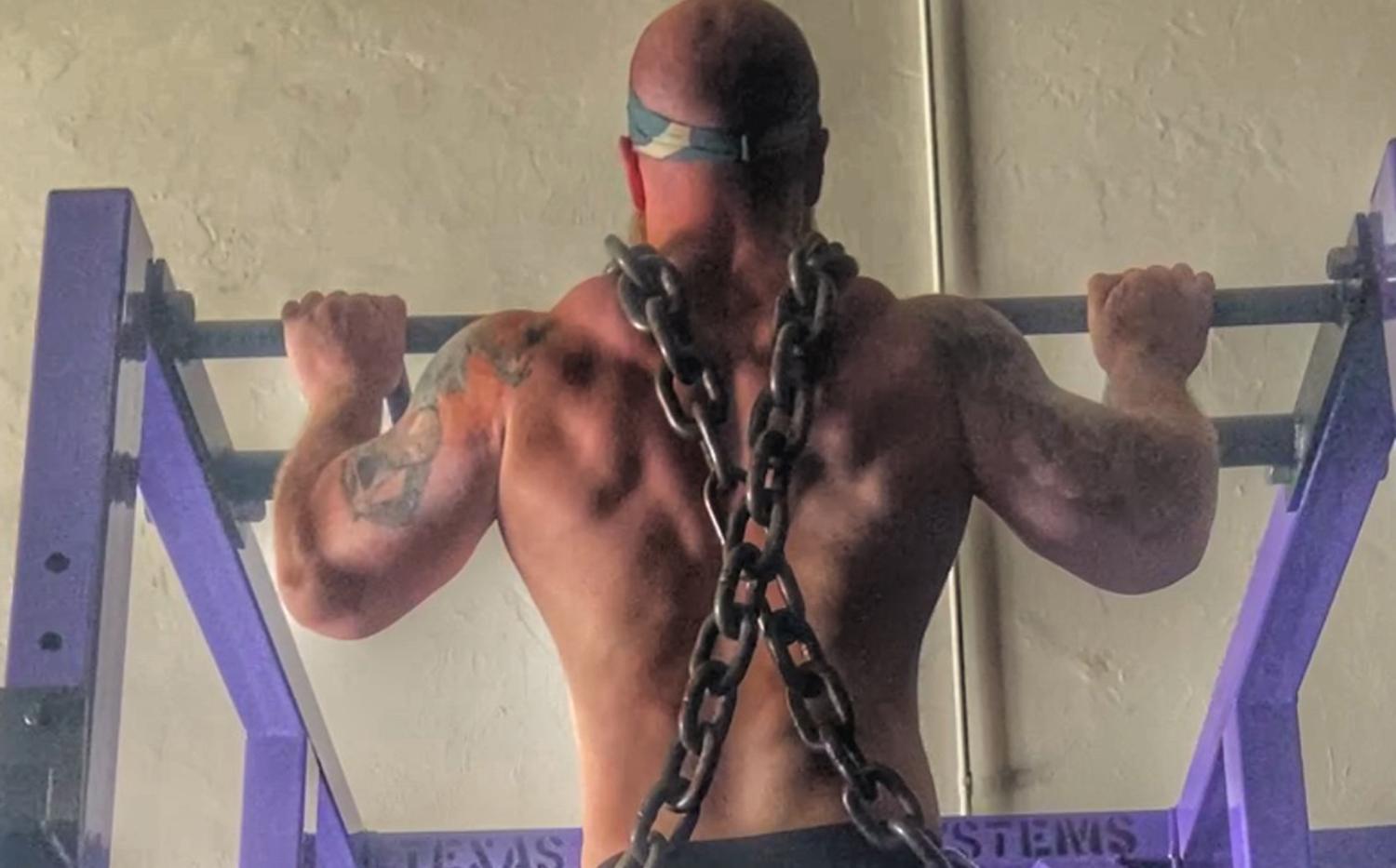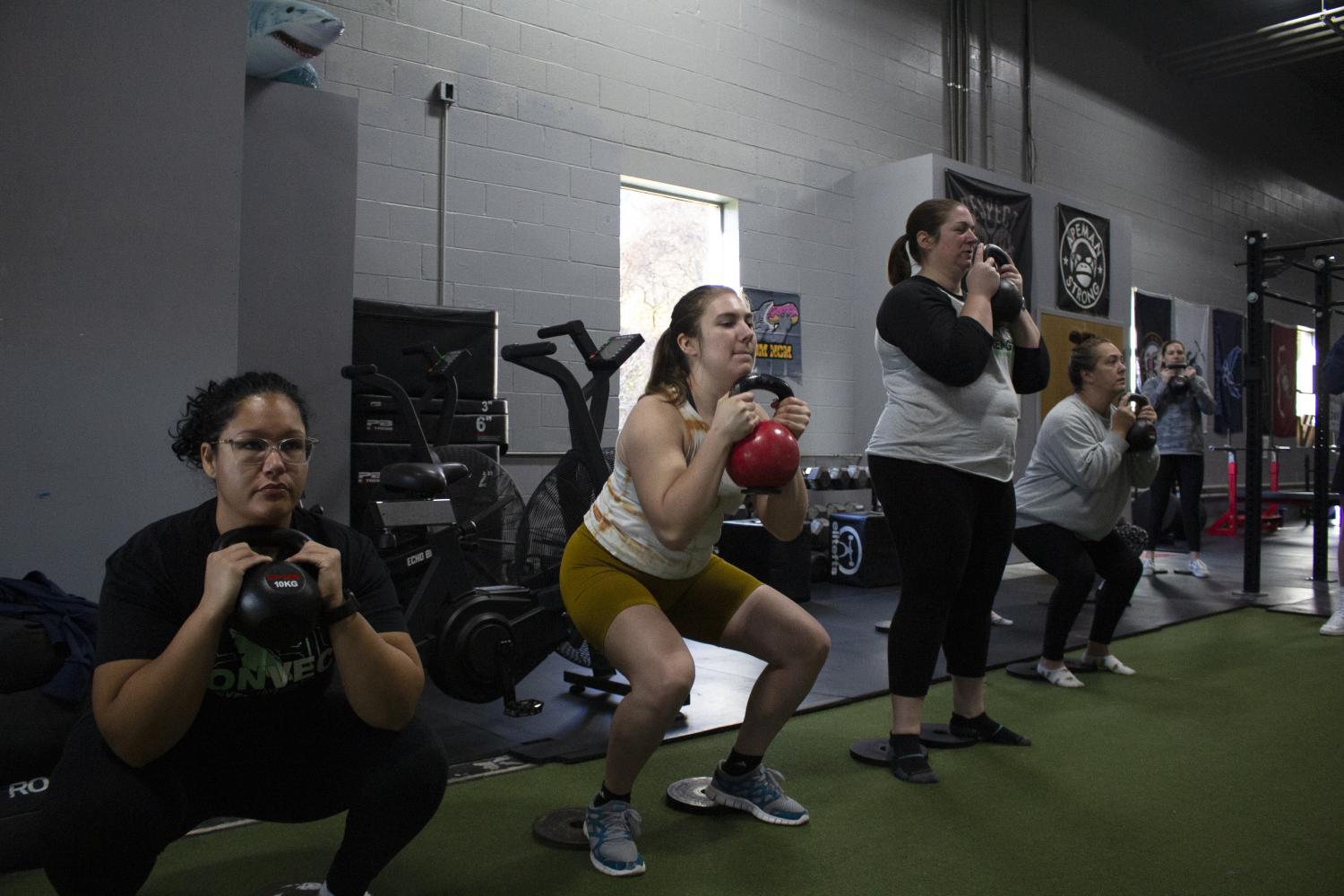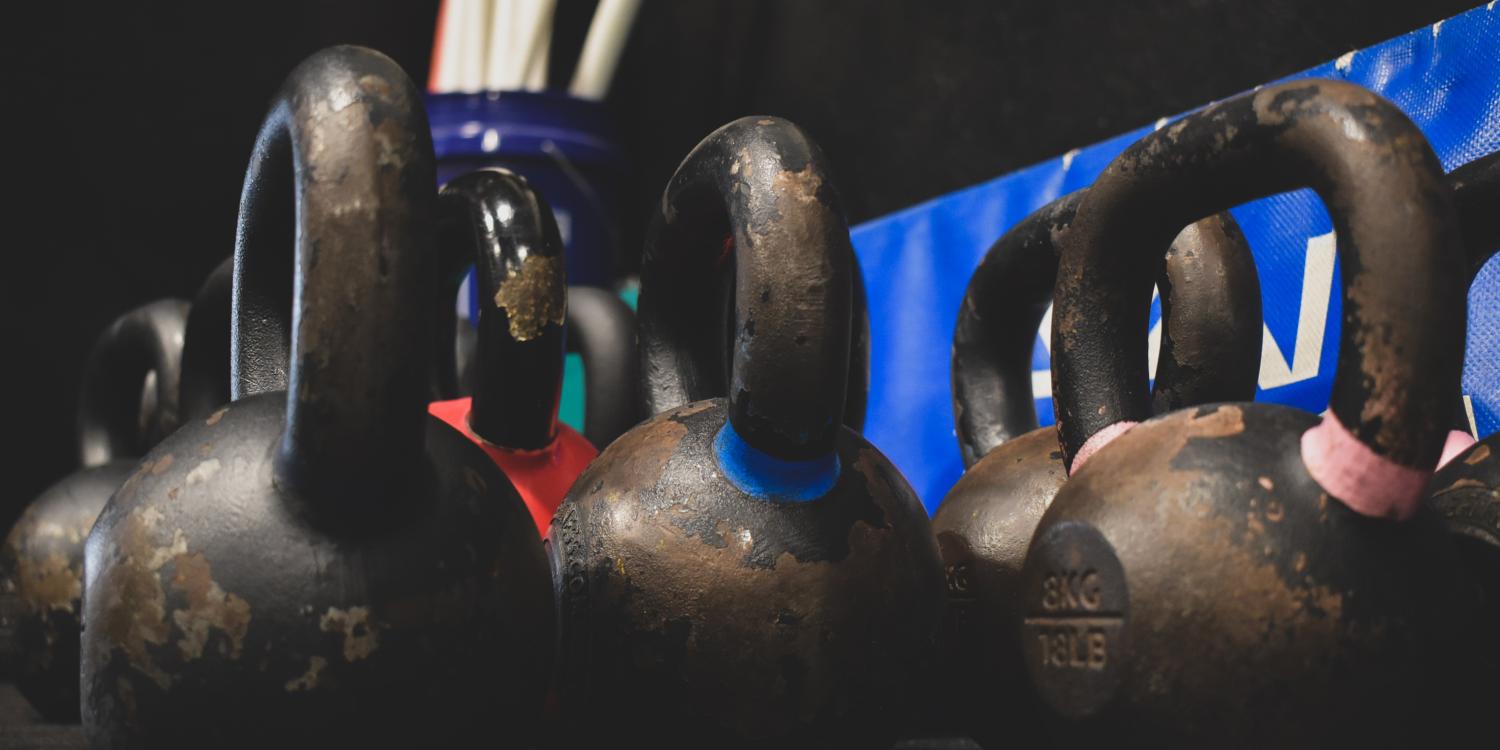
Hypertrophy
Bonvec Strength
Powerlifting, BodybuildingAre you tired of bodybuilding bro programs that leave you looking exactly like you did when you started? Or boring, monotonous powerlifting programs that have you doing the same exact workouts for weeks on end? Want to get stronger AND actually look like you lift? You've come to the right place.
Hypertrophy, the best-selling 12-week muscle building program from Bonvec Strength, is designed to help you build as much muscle as possible while building skill in the squat, bench press and deadlift. This isn't a cookie cutter bodybuilding program you'd pull from a cheesy magazine. And it's not a boring 5x5 squat/bench/deadlift/repeat program either. It's a tried-and-true compilation of the methods we've used to help hundreds of lifters get jacked, get strong and kick ass.



Technique is a Choice
A
Technique is a Choice
Technique is a Choice If you're reading this program, chances are you already know a thing or two about how to squat, bench press and deadlift. However, you're never too strong or too experienced to work on improving your technique. At Bonvec Strength, we like to say that technique is a choice. It's completely in your power to give 100 percent of your attention and focus to your technique when you're under the bar. It's completely in your power to choose the weight on the bar based on your technical max (i.e., the weight you can lift with optimal technique), NOT simply as heavy as you can go even if your technique falls to pieces. And it's completely in your power to be a student of the iron, continually striving to learn and improve your technique. This section includes three in-depth tutorials on the squat, bench press and Romanian deadlift. Watch the videos before diving into this program so you have a clear idea of how best to perform the big lifts as safely and effectively as possible.
How to Squat
B
How to Squat
How to Squat
How to Bench Press
C
Bonvec Strength: How to Bench Press
How to Bench Press
How to Romanian Deadlift
D
Bonvec Strength: How to Romanian Deadlift
How to Romanian Deadlift
Why No Deadlifts from the Floor?
E
Bonvec Strength: Why No Deadlifts from the Floor?
Why No Deadlifts from the Floor? You might be asking, why are there no conventional or sumo deadlifts from the floor in this program? That's because for hypertrophy purposes, the Romanian deadlift is vastly superior. Remember, the purpose of this program is to build as much muscle as possible. The RDL features a more substantial eccentric phase, which increases muscle building potential, and is better suited for fatiguing the hamstrings than deadlifting from the floor, which will likely fatigue the lower back first. And because RDLs don't stop on the floor between reps, there is increased time under tension, leading to greater muscle fatigue. RDLs are still highly specific to the deadlift, so even if you take 12 weeks and perform no deadlifts from the floor, if you substantially improve your RDL strength AND add size to your hamstrings, you will likely be a better deadlifter once you add them back into your routine.
Important Concepts
F
Bonvec Strength: Important Concepts
Reps In Reserve (RIR) This program uses the Reps In Reserve (RIR) method to determine the loading and reps per set of all exercises. Rather than performing a predetermined number of reps per set, you will select a weight that you believe will result in you completing the set in a certain rep range, and then perform as many reps as possible, stopping a certain number of reps shy of failure (i.e., leaving reps in reserve). For example, say you were going to do triceps extensions and you wanted to do 10-12 reps (a common hypertrophy rep range). You realize midset that the weight is somewhat easy, but stop at 12 reps with about 5 reps in reserve. Was this set productive? Probably not. Arbitrarily stopping at 12 reps leaves you too far from failure to force the body to adapt and build muscle. Rather than stopping at 12, say you intended to perform the set to 2 RIR, so you continued to do reps until you got to 15, which was difficult but felt like you have done 2 more reps if you absolutely had to. Although you did more reps than the target rep range (10-12), you stayed true to the 2 RIR assignment and finished the set close enough to failure to likely trigger a hypertrophy response. Choosing Exercises The main purpose of this program is build as much muscle mass as possible in 12 weeks. This will give you a foundation upon which to build maximal strength in the future. Adding muscle to your frame will make you more resilient during periods of heavy loading by protecting your joints and reducing weak points in your lifts. In this program, you'll choose exercises based on 2 main criteria: Carryover to the main lifts Ability to fatigue the target muscle(s) Carryover to the Main Lifts Training specificity is one of the most important factors to consider when choosing exercises. The SAID principle (Specific Adaptations to Imposed Demands) quite simply states that you get what you train for. If you train for strength (i.e., lift heavy weights in the 1-8 rep range), you'll get stronger. If you train for hypertrophy (i.e., lift moderate weights in the 8-20 rep range), you'll increase muscle mass. Training for strength won't necessarily yield the greatest hypertrophy gains, and hypertrophy training won't necessarily yield the greatest strength gains. There is some crossover, but separating training into distinct phases - such as this program that focuses on hypertrophy - allows you to maximize the specific adaption that you're seeking. Assuming that most people using this program have the ultimate goal of improving their performance in powerlifting (i.e., increasing their 1-rep max in the squat, bench press and deadlift), hypertrophy training is NOT the most specific thing you can do as a powerlifter. However, one can also reason that only performing the squat, bench press and deadlift will not yield the greatest possible results in powerlifting either. So why train for hypertrophy as a powerlifter? Because increased muscle mass increases one's ultimate force-generating potential. Strength is largely neurological (i.e., your nervous system determines your "skill" in the squat, bench press and deadlift), but your amount of muscle mass determines how much force you can call upon to lift the bar. More muscle equals more cross-sectional area under the bar (leading to better leverages and joint stability), more muscle fibers to recruit and high-threshold motor units to help you ramp up to maximal efforts as quickly as possible. In other words, if the nervous system is the general leading the army, your amount of muscle mass is the number of soldiers you have to fight the battle. Even when training for hypertrophy, some exercises have greater carryover to the big lifts than others. Nothing is more specific than the squat, bench press and deadlift, and they can all be successfully trained in a hypertrophy rep range. Beyond that, it's important to be mindful of which exercises seem to make your competition lifts go up when you improve your performance in them. For example, you may notice that when you improve your performance in the Barbell Bent-Over Row, your bench press improves due to increased upper back stability and control over your bar path. You may also experience positive carryover to your main lifts by choosing exercises that target weak points during your main lifts. For example, if you struggle to keep your core braced during squats, you should choose abdominal exercises that focus on bracing, such as front planks and side planks. Or if you struggle to keep the bar close to your shins during the deadlift, you may have a muscular weakness in your lats, and would benefit from performing exercises such as pull-ups and lat pulldowns. As these exercises improve, you should see a reduction in your weak points. Ability to Fatigue the Target Muscle(s) Whenever you're performing an exercise for hypertrophy, ask yourself this question: What fatigues first in this exercise? If the answer isn't the target muscle, then that exercise is a poor choice. For example, if someone lacks sufficient grip strength to perform enough pull-ups to fatigue their lats, then the pull-up is a poor exercise choice for hypertrophy. The person's grip strength will fail long before the lats, and lat pulldowns would be a better choice because grip strength is a non-factor. This is the inherent challenge of using the squat, bench press and deadlift for hypertrophy. Each exercise shares common fatigue points under heavy loads, specifically the upper back (for all three movements), the core (for squat and deadlift) and the triceps (for bench press). It can be challenging to fatigue the "target muscles" (quads and glutes for squat; chest, shoulders and triceps for bench; and lats, hamstrings and glutes for deadlift) before something else fails. That said, appropriate load selection (i.e., not going heavier than your technique can handle) and choosing subtle variations of the main lifts (i.e., high bar squats to fatigue the quads before the upper/lower back) can help make the main lifts more conducive for hypertrophy. When training for hypertrophy, experiment with different exercises to see which ones allow you to fatigue the target muscles most effectively. Everyone is different, and there is no perfect answer.
How to Use This Program
G
Bonvec Strength: How to Use This Program (Hypertrophy)
Hypertrophy was designed to build as much muscle as possible in 12 weeks while still maintaining skill in the squat, bench press and deadlift. After 12 weeks, you'll be ready to return to heavy, low-rep strength training with a new base of muscle to provide extra horsepower. Make sure you read this section thoroughly to produce the greatest possible results. STEP 1 – Make sure that you are healthy enough to exercise. If you’re injured, unfortunately this program isn’t for you. Your doctor or physical therapist can tell you if you’re ready. STEP 2 – Read the whole program. It’s important to read everything so you know what you’re doing once you hit the gym floor. STEP 3 – Commit to training 5 days per week for at least 90 minutes, if not longer. STEP 4 – Pick your exercises from the Exercise Database and watch the exercise demonstration videos. Every single exercise in this program has an instructional video where we walk you step-by-step through proper technique to ensure safety and maximum results. STEP 5 – Start Week 1 and do your first training session. Get under the bar and get it done! STEP 6 – Write down the weights, sets and reps of every exercise on the workout sheets provided. This will help you track your progress and ensure that you’re appropriately challenging yourself each workout. STEP 7 – Go home, eat some good food and get some rest. Quality nutrition and sleep are your 2 strongest weapons in your fight for increased muscle mass. STEP 8 - Repeat steps 5 through 7 until you’ve completed the 12-week program. STEP 9 – After the program is finished, you should be ready to return to heavier weights and shift your approach to a strength-focused program. STEP 10 – Let us know how you did! We’re always happy to listen, help and celebrate your progress with you. Feel free to reach out to us on social media with questions, concerns or comments.
Conditioning
H
Bonvec Strength: Training Schedule (Hypertrophy)
There are two possible training schedules for Hypertrophy. The days are listed as if your training week starts on Monday, but this is only for example and your training week can start on any day as long as the training days and rest days are separated accordingly. Option 1 Monday: Day 1 - Lower (Quad Focus) Tuesday: Day 2 - Upper (Chest Focus) Wednesday: Off Thursday: Day 3 - Lower (Glutes/Hamstrings Focus) Friday: Day 4 - Upper (Back Focus) Saturday: Day 5 - Upper (Shoulders/Arms Focus) Sunday: Off Option 2 Monday: Day 1 - Upper (Chest Focus) Tuesday: Day 2 - Lower (Quad Focus) Wednesday: Day 3 - Upper (Back Focus) Thursday: Off Friday: Day 4 - Lower (Glutes/Hamstrings Focus) Saturday: Day 5 - Upper (Shoulders/Arms Focus) Sunday: Off If possible, don’t train more than three days in a row or take more than one day off in a row. Also, don't train lower body twice within a 72-hour period. This allows for optimal recovery between workouts but also encourages consistency.
A
Back Squat
B
Pause Back Squat
C
DB Walking Lunges
D
Lying Leg Curl
E
Reverse Crunch
A
Bench Press
B
DB Fly
C
Neutral Grip Lat Pulldowns
D
Cable Triceps Pushdowns w/ Rope
E
DB Bicep Curls
Conditioning
F
Chest Finishers
Chest Finishers - Choose One [Juarez Valley Push-Ups: https://vimeo.com/726975777/ddfb69fcf5] Perform 10 sets up push-ups, with each set separated by a short walk as active rest. Each set of push-ups is 11 reps, with the finisher split up like so: 10/1, 9/2, 8/3, 7/4, 6/5, 5/6, 4/7, 3/8, 2/9, 1/10. For example, start by doing 10 push-ups, then walk 10 yards, do 1 push-ups, walk back 10 yards, do 9 push-ups, walk 10 yards, do 2 push-ups, etc. until you've completed the full 10 sets. [Push-Up Mechanical Drop Set (Hand Width): https://vimeo.com/726975468/a68ba308d8] Perform push-ups with 3 different hand positions one right after another. Start with narrow push-ups, perform as many as possible. Once you're 2-3 reps shy of failure, switch to normal push-ups. Once you're 1-2 reps shy of failure, switch to wide push-ups and perform reps until failure. Rest for 60-90 seconds and repeat for 2-3 sets. [Push-Up Mechanical Drop Set (Hand elevation): https://vimeo.com/726975250/f5b8cbd96f] Perform push-ups with 3 different hand elevations one right after another. Start with hands on the floor and perform as many as possible. Once you're 2-3 reps shy of failure, elevate your hands 6-8" off the floor on a box, bench or barbell in a rack. Once you're 1-2 reps shy of failure, elevate your hands 12-18" off the floor on a box, bench or barbell in a rack and perform reps until failure. Rest for 60-90 seconds and repeat for 2-3 sets. If you can get more than 20 reps with your hands on the floor, then start with feet-elevated push-ups, then normal push-ups and finally hands elevated 6-8" for the 3 hand placements.
A
Romanian Deadlift
B
Back Squat
C
Seated Leg Curl
D
Back Extension
E
Body Saw
A
Barbell Bent-Over Row
B
Wide Grip Lat Pulldowns
C
1-Arm DB Row
D
1-arm Cable Rear Delt Flyes
Conditioning
E
Back Finishers
Back Finishers: Pick One [Hang and Swing Rear Delt Destroyer: https://vimeo.com/726975068/1f4e63edff] Set up an incline bench and grab 2 pairs of dumbbells, one heavy pair and one light pair. Grab the heavy pair (wear straps if possible) and set up face-down on the incline bench. In a rhythmic swinging motion, perform the first 6-8" of range of motion of a rear delt fly for 20 reps. Then, immediately switch to the lighter dumbbells and perform full range of motion rear delt flyes for 15 reps. Rest for 60-90 seconds and repeat for 2-3 sets. [1-arm DB Row Extended Set: https://vimeo.com/726974922/a4380eae45] Grab a dumbbell that you could row for 15-20 reps in one set. Perform 1-arm dumbbells rows, switching arms each time you approach failure. Continue to switch back-and-forth with no rest until you can't complete at least 3 reps per side. [Pull-Up Ladder: https://vimeo.com/726973888/3452af218e] Set a timer for 8 minutes. Perform a certain number of pull-ups well shy of failure, walk back and forth across the room (10-20 yards is ideal), and perform another set up pull-ups for one more rep than the previous set. Repeat this again so each of the 3 sets is one rep more than the last. Then, go back to the lowest number of reps and repeat for 8 minutes. For example, your ladder could be 1,2,3 reps or 4,5,6 reps, etc. Pick a rep range that starts off easy and becomes very difficult by the end of the 8 minutes. If you miss a rep of any set, go back to the lowest number of reps and/or walk slower/further between sets to allow for more rest.
A
Overhead Press
B
Close Grip Bench Press
C
DB Lateral Raise
D
Rolling DB Triceps Extension
E
Incline DB Curls
Conditioning
F
Arm Finishers
Arms Finisher: Pick One [Dirty 30's: https://www.youtube.com/watch?v=A2hu8xG1Cmg] Grab a pair of dumbbells or an EZ Bar loaded to a weight that would allow you to perform 15-20 triceps extensions/skull crushers in a single set. Then, perform 10 skull crushers, 10 bent-arm pullovers and 10 close grip presses with no rest in between. Rest 60-90 seconds and repeat for 2-3 sets. [Bodyweight Triceps Extension Ladder: https://vimeo.com/726974221/4c57f258e6] Set up a barbell in a power rack or squat rack at hip height. Perform bodyweight triceps extensions until near failure. Immediately raise the height of the barbell one notch in the rack and continue. Keep raising the height of the barbell each time you approach failure until you complete 100 reps total. [Band Triceps Pushdown Clusters: https://vimeo.com/726974060/3b230e2473] Use a band that you could do triceps pushdowns with for 15-20 reps in one set. Perform 8 reps, rest 15 seconds, perform 8 more reps, and continue to perform sets of 8 with 15 seconds rest in between for 6-8 minutes straight. [DB Curl Run-the-Rack: https://vimeo.com/726974422/fcf3a51f1b] Start with a pair of dumbbells that you could curl for 15-20 reps in one set. Then, perform as many curls as possible, stopping 1-2 reps shy of failure. Immediately switch to the next lightest set of dumbbells and repeat until you've perform 5 sets of curls or you've run out of dumbbells, whatever comes first. Rest for 60-90 seconds and repeat for 2-3 sets. [DB Curl 21's (Variations): https://vimeo.com/726974637/7f4af7c09a] Start with a pair of dumbbells that you could curl for 15-20 reps in one set. Then, perform 7 Zottman curls, 7 regular curls and 7 Hammer curls with no rest in between. Rest for 60-90 seconds and perform 2-3 sets. [DB Curl Clusters: https://vimeo.com/726974770/3e6e6f90e9] Start with a pair of dumbbells that you could curl for 15-20 reps in one set. Then, perform 6 reps, rest 15 seconds, perform 6 more reps, and continue to perform sets of 6 with 15 seconds rest in between for 6-8 minutes straight.
 Tony Bonvechio
Tony Bonvechio
Elite-level powerlifter with over a decade of coaching experience. Master's degree in Exercise Science. Mediocre fisherman, craft beer enthusiast and world's biggest Metallica fan.


If you want to get jacked, build muscle and lay the groundwork for future strength gains, sign up today!
Get Hypertrophy
 Chris S
Chris S
Gained 10 Lbs of Lean Mass
Verified Athlete"This Hypertrophy program was one of my favorite mass gaining training blocks I’ve run to date. I gained 10 pounds of lean mass and my strength shot up through the roof! I highly recommend this training program if you’re looking for a new way of adding size and strength while having fun doing it."
 Chris C
Chris C
174.5 lbs/15% BF to 179.5 lbs/11% BF
Verified Athlete"I was absolutely blown away by the results. I went from 174.5 lbs at 15.5% body fat to 179.5 lbs at 11% body fat! I feel healthier, stronger, and have the best physique I’ve ever had!"
 Jay C
Jay C
Take Your Gains to the Next Level
Verified Athlete"I can't say enough positive things about training with Tony. I thought I'd exhausted most methods for hypertrophy. His creative programming helped me experience new growth that wouldn't have been possible on my own. I highly recommend Bonvec Strength if you want to take your gains to the next level."



